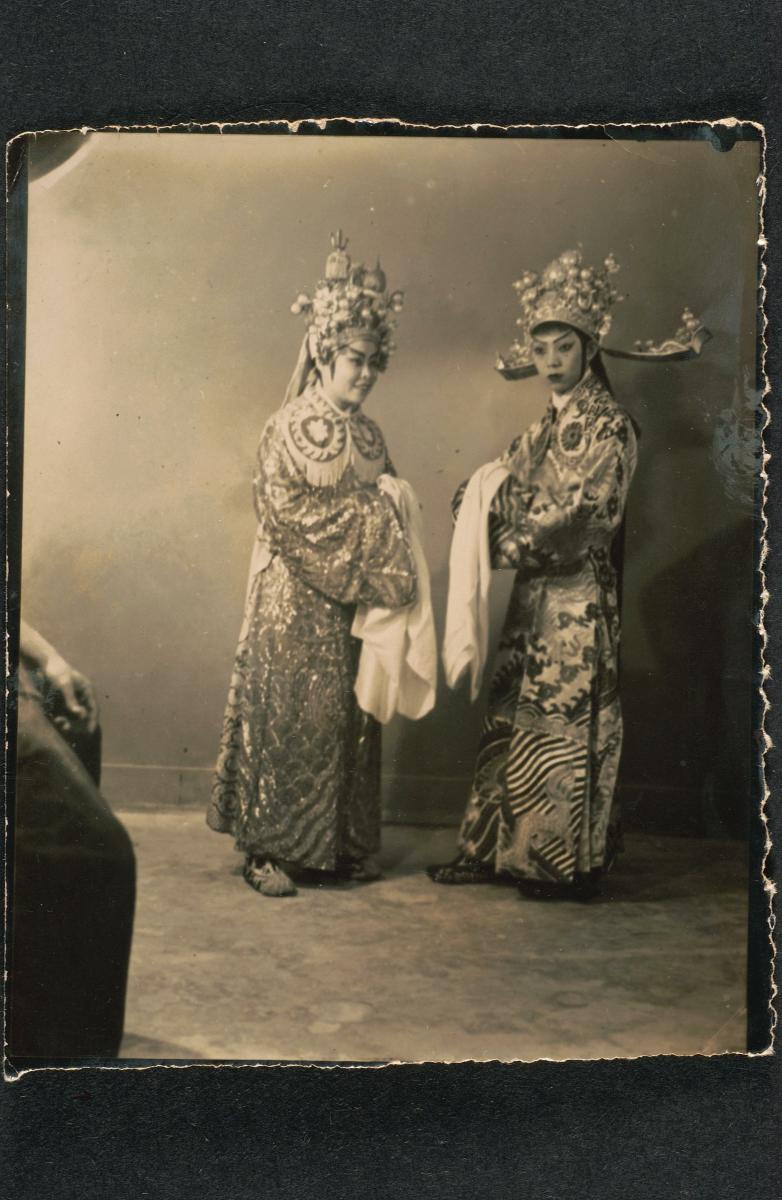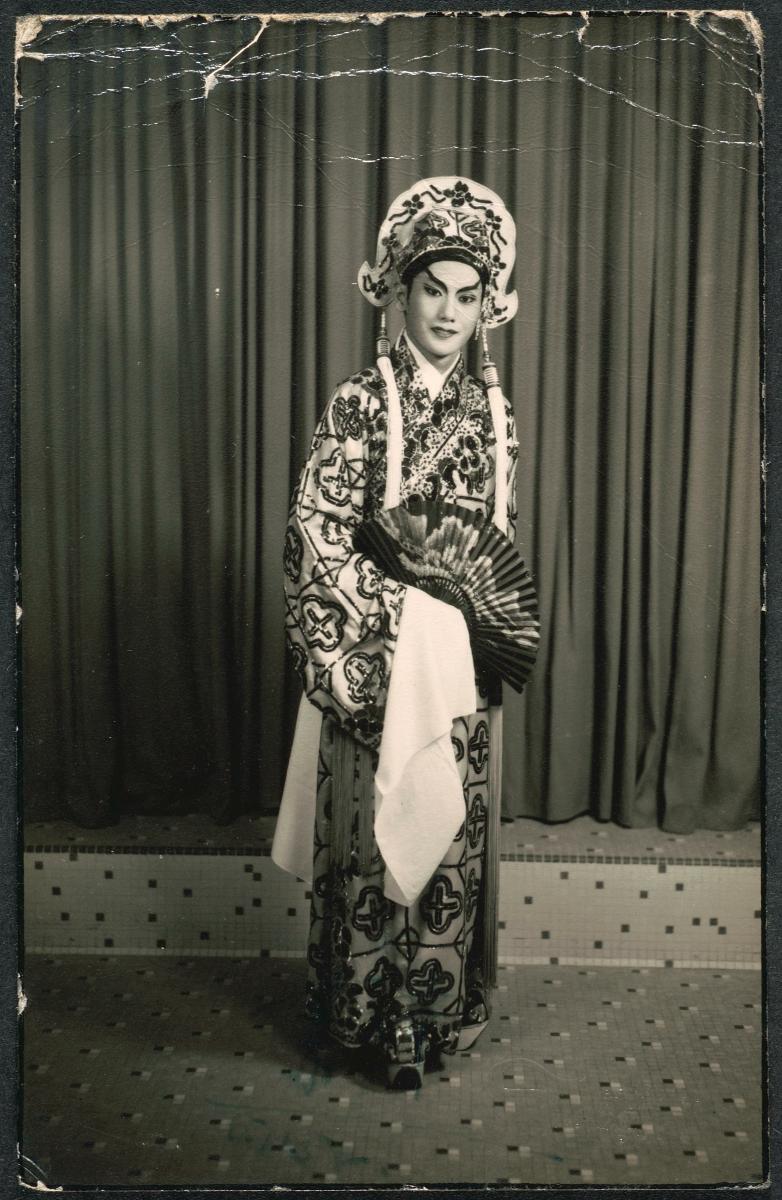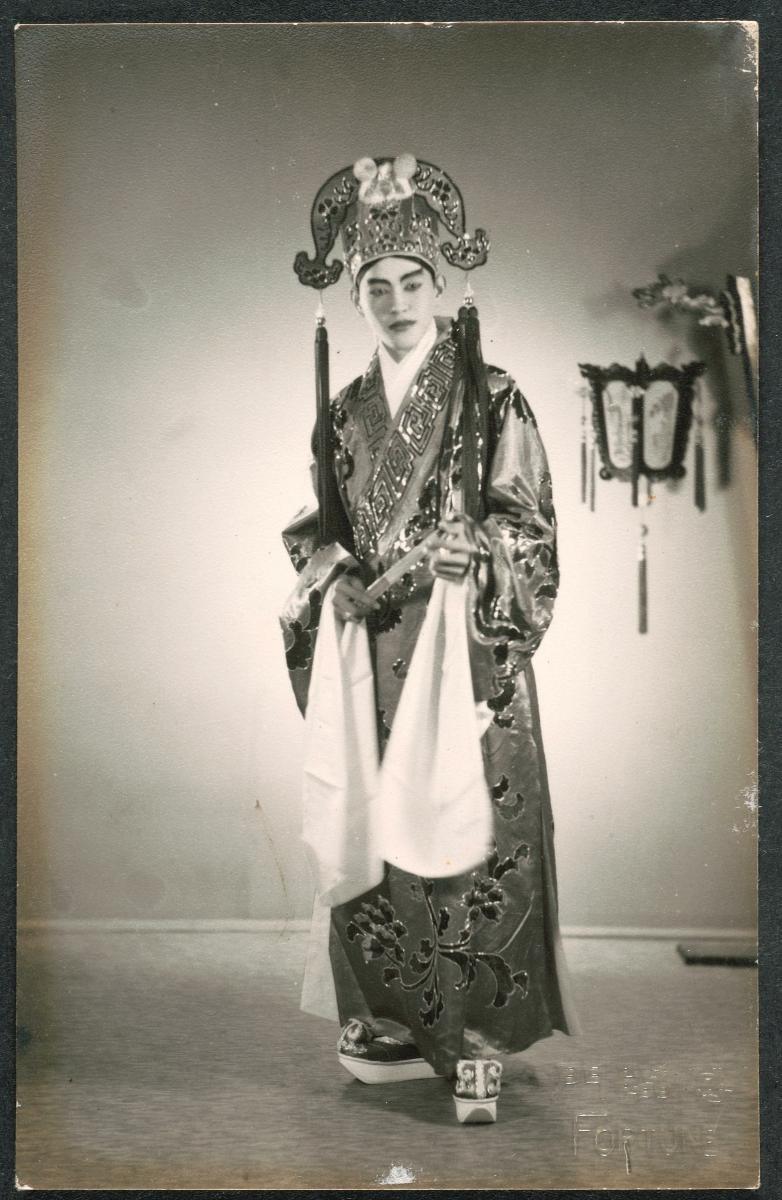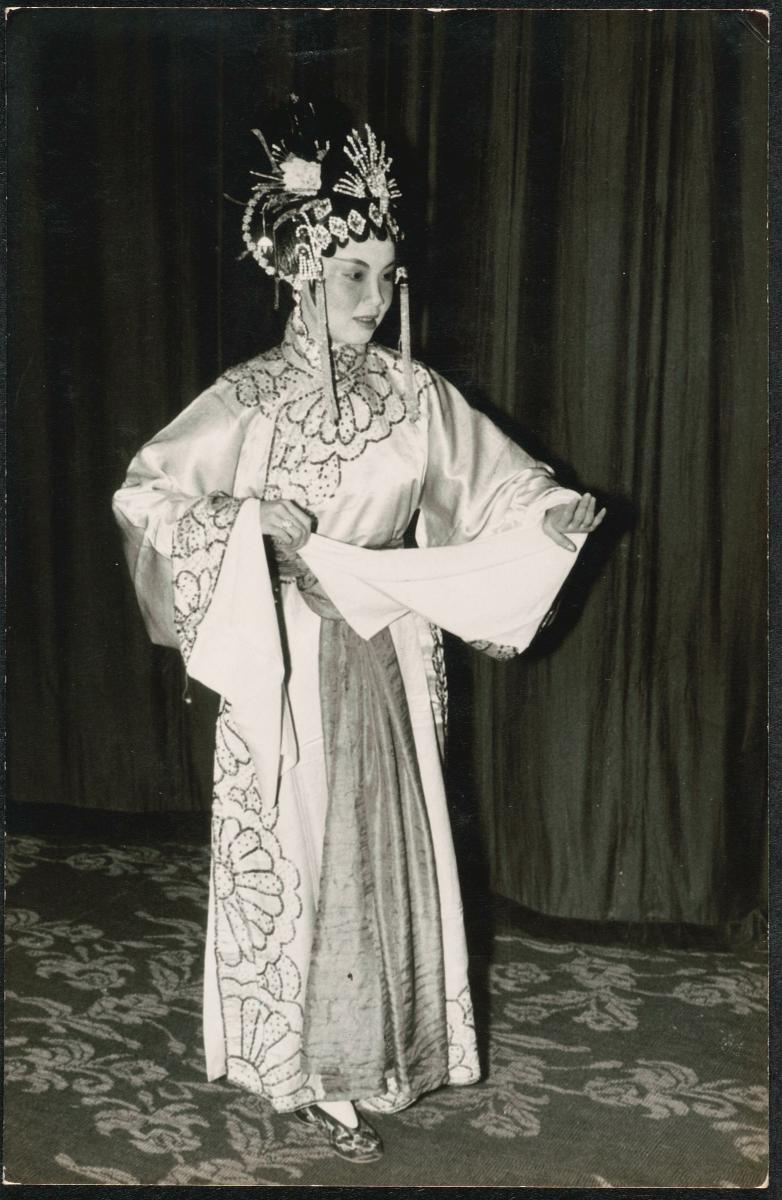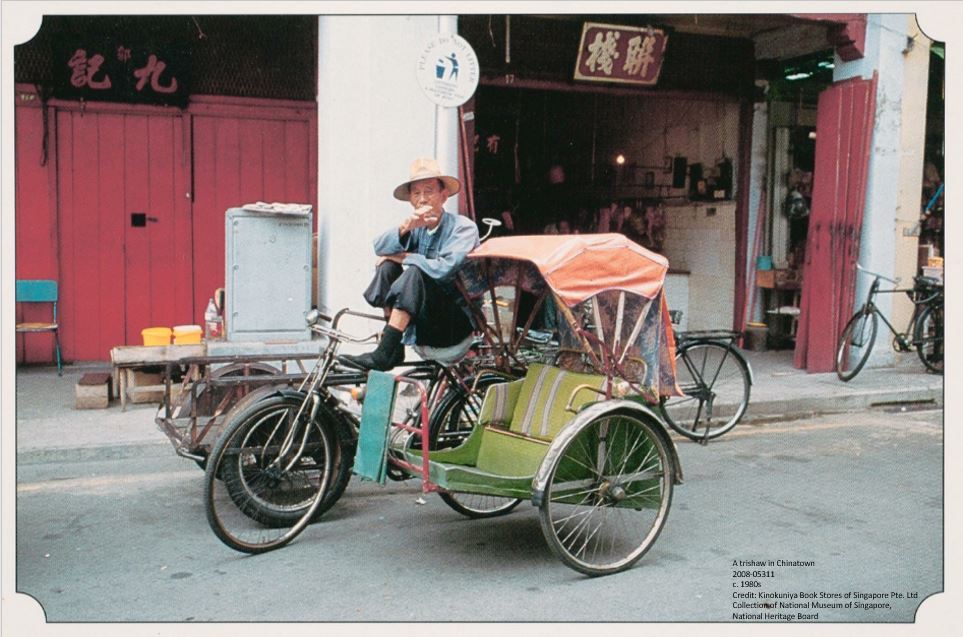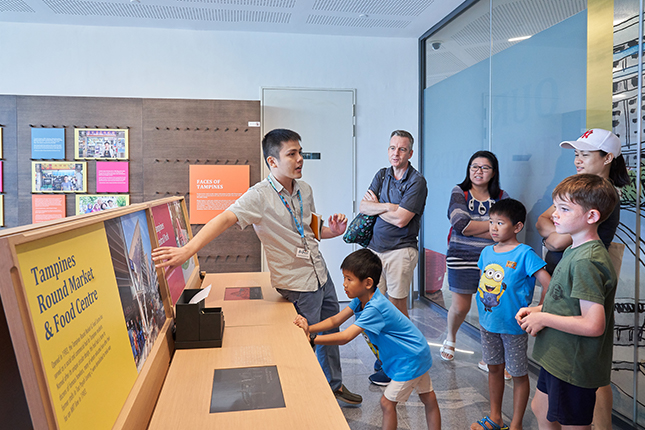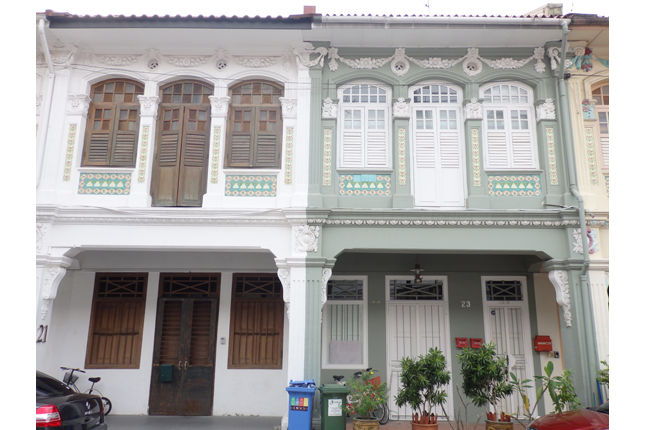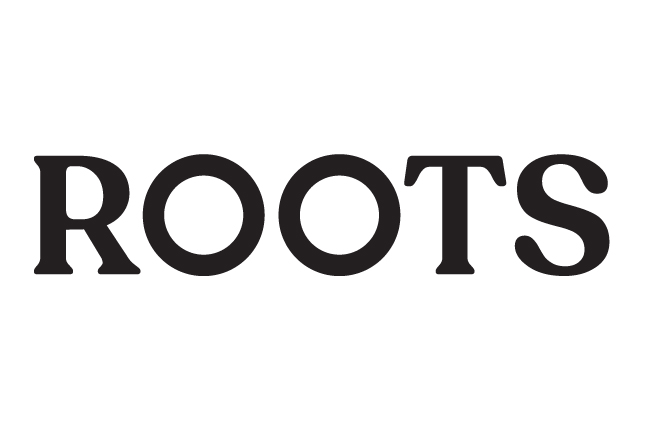The two actors depicted in this photograph are dressed as ‘sheng’ or the male character, one of the four main roles enacted on the Chinese opera stage. The other roles include 'dan' (the female), 'jing' (the painted face) and 'chou' (the clown). Chinese opera costumes, which have evolved over the centuries since the dynasties of Imperial China, are typically decorated with intricate designs and accessories that portray the age, traits and social status of the character. The headdress – as worn by the two actors in the photograph – is an important element of the Chinese opera costume. Adorned with sequins, pearls and other ornaments, the headdress helps to distinguish specific roles; the more important the character, the more elaborate the headdress. For a period of time, Chinese opera in Singapore went through a difficult phase with the arrival of silent movies in the 1920s, the Japanese Occupation and a depressed economy in the 1950s. Nonetheless, it made a comeback in the decades thereafter, following the influx of fresh ideas from overseas troupes, while opera-themed movies revived interest in the performing art.




